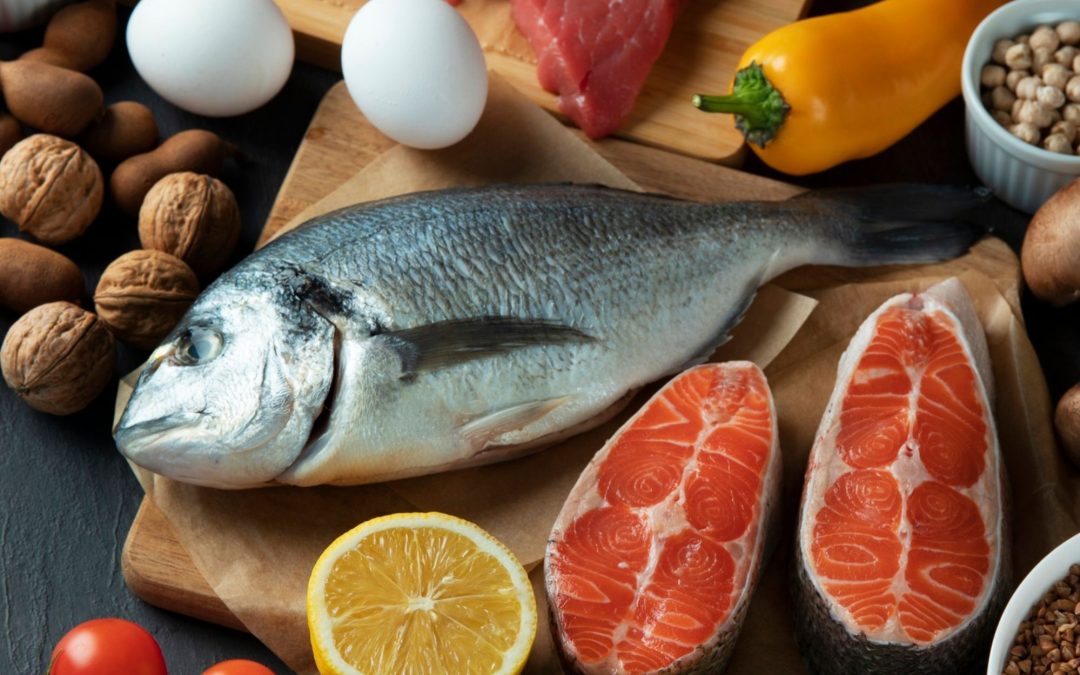According to the GAPS Diet site, “A healthy and resilient gut microbiome is essential for immune function and overall health. The GAPS diet aims to reduce inflammation, support the gut lining, and restore microbial diversity through dietary intervention and detoxification.” The term “GAPS,” coined by Dr. Natasha Campbell-McBride, MD, MMedSci (Neurology), MMedSci (Human Nutrition) in 2004, stands for Gut and Psychology Syndrome. Originating from the gut-brain connection, it pertains to numerous neuropsychological disorders that Dr. Campbell-McBride has encountered in her patients over the years [1]. These include neurological and psychiatric conditions like autism spectrum disorders, ADHD, schizophrenia, dyslexia, dyspraxia, depression, obsessive-compulsive disorder, bipolar disorder, and other neuropsychological and psychiatric issues.
More recently, GAPS has also been interpreted as Gut and Physiology Syndrome, reflecting the connection between the gut microbiome and various bodily functions. This interpretation encompasses chronic physical conditions stemming from an unhealthy gut, such as autoimmune conditions (e.g., rheumatoid arthritis, type 1 diabetes, multiple sclerosis, Crohn’s disease, ulcerative colitis, autoimmune skin problems, Hashimoto’s thyroiditis, etc.), asthma, eczema, allergies and intolerances, chronic fatigue syndrome, fibromyalgia, multiple endocrine disorders (thyroid, adrenal, etc.), chronic infections, neurological diseases, and chronic digestive disorders (e.g., irritable bowel syndrome, gastritis, colitis).
The GAPS diet operates on the premise that gut health is intrinsically linked to overall physical and mental well-being. According to this concept, improving gut health can improve other health concerns. While research supports a connection between the brain and gut, particularly in cases of anxiety and depression, the evidence is somewhat mixed on specific aspects of the diet. Essentially, the GAPS diet involves eliminating hard-to-digest foods that might damage the gut microbiome or lining, and substituting them with nutrient-rich foods believed to aid in gut healing.
Following the GAPS Diet
The diet consists of an optional introduction phase which is broken into six stages (each adding specific foods that “heal the gut”) followed by the full GAPS diet for 18 to 24 months and then the subsequent reintroduction phase.
- Stage 1: Consume homemade bone broth, juices from probiotic foods and ginger, and drink mint or chamomile tea with honey between meals. People who are not dairy intolerant may eat unpasteurized, homemade yogurt or kefir.
- Stage 2: Add in raw organic egg yolks, ghee and stews made with vegetables and meat or fish.
- Stage 3: All previous foods plus avocado, fermented vegetables, GAPS-recipe pancakes and scrambled eggs made with ghee, duck fat, or goose fat.
- Stage 4: Add in grilled and roasted meats, cold-pressed olive oil, vegetable juice, and GAPS-recipe bread.
- Stage 5: Introduce cooked apple purée, raw vegetables starting with lettuce and peeled cucumber, fruit juice, and small amounts of raw fruit, but no citrus.
- Stage 6: Finally, introduce more raw fruit, including citrus.
Once the 6 introduction diet stages are complete, you can move to the full GAPS diet. As mentioned above the full GAPS diet can last 1.5–2 years.
What Foods Can You eat on the Full GAPS Diet?
The Full GAPS diet involves consuming nutrient-rich foods that are easier to digest. Here is a list of foods you can incorporate into this diet:
- Fresh Meat: It is recommended to choose hormone-free and grass-fed options whenever possible.
- Animal Fats: These include lard, tallow, lamb fat, duck fat, raw butter, and ghee.
- Vegetables: Preferably organic to avoid pesticides and other chemicals.
- Eggs: Organic ones are highly recommended.
- Fermented Foods: These are important for gut health and can include items such as kefir, homemade yogurt, kimchi, and sauerkraut.
- Fish and Shellfish: Fatty fish like salmon are particularly beneficial.
- Nuts: These can be consumed in moderation, as can baked goods made with nut flours according to GAPS diet recipes.
Remember, while the foods listed here are permissible on the Full GAPS diet, it’s essential to balance your food intake to ensure you’re meeting your body’s nutritional needs.
Potential Benefits and Drawbacks of the GAPS Diet for Gut Health
The GAPS Diet is formulated to mend the gut lining, restore the bacterial balance within the gastrointestinal tract, and regulate the immune system. Adherence to this diet could enhance a person’s gut health, promoting the consumption of fewer processed foods and more fruits, vegetables, and natural fats. Such dietary modifications could potentially improve gut health and overall wellbeing. However, it’s important to note that there isn’t clinically accepted evidence supporting all the claims of the GAPS diet’s effectiveness in treating specific conditions.
Benefits
- Eliminating artificial sweeteners: According to some animal studies, artificial sweeteners can create imbalances in gut bacteria and increase the risk of metabolic problems [2].
- Focus on fruits and vegetables: A 2016 clinical study with 122 people showed that eating fruits and vegetables can prevent a potentially harmful strain of bacteria from growing in the gut [3].
- The GAPS diet emphasizes a diet rich in fermented foods and probiotics: Probiotics can improve the beneficial bacteria in your gut. A recent study suggests that probiotic yogurt may help lower blood sugar levels in people with metabolic syndrome [4]. In addition, these beneficial gut bacteria are believed to communicate with the cells of the immune system, which can alter and improve the way that your body responds to disease and infection and promote enhanced immunity [5,6].
- May reduce inflammation: The GAPS diet includes many anti-inflammatory foods, such as antioxidant-rich vegetables, heart-healthy fats and fish.
Drawbacks
- Not Vegan or Vegetarian friendly: Those on a vegetarian or vegan diet may not be able to meet their nutrient needs as the GAPS diet food list is based heavily on animal products.
- Time-consuming to plan and cook meals
- Consumption of large quantities of red meat
- Restrictive and may actually reduce certain micronutrient intake due to a somewhat limited food variety. This is especially true for children that are using this diet.
- Can be expensive
Since it emphasizes nutrient-rich foods and eliminates several food groups that may not be good for digestion, many people have seen success with the plan in both improving gut health and treating various ailments. However, researchers have not yet fully explored this diet and there may still be some concerns around the premise of this diet. Despite a lack of research on the diet specifically, there are a variety of existing studies looking at many of its individual components and demonstrating that this diet may come with a whole host of health benefits. Some of these beneficial components share similarities to certain beneficial parts of the Specific Carbohydrate Diet and the Vertical Diet.
Sources
[1] Clapp, M., Aurora, N., Herrera, L., Bhatia, M., Wilen, E., & Wakefield, S. (2017). Gut microbiota’s effect on mental health: The gut-brain axis. Clinics and practice, 7(4), 987. https://doi.org/10.4081/cp.2017.987 [2] Suez, J., Korem, T., Zeevi, D. et al. (2014). Artificial sweeteners induce glucose intolerance by altering the gut microbiota. Nature 514, 181–186 https://doi.org/10.1038/nature13793 [3] Klinder, A., Shen, Q., Heppel, S., Lovegrove, J. A., Rowland, I., and Tuohy, K. M. (20160. Impact of increasing fruit and vegetables and flavonoid intake on the human gut microbiota. Food Funct., 7, 1788-1796 https://doi.org/10.1039/C5FO01096A [4] Rezazadeh, L., et al., (2020). Effects of probiotic yogurt on glycemic indexes and endothelial dysfunction markers in patients with metabolic syndrome. Nutrition 62, 162-168. https://doi.org/10.1016/j.nut.2018.12.011 [5] Round, J. L., & Mazmanian, S. K. (2009). The gut microbiota shapes intestinal immune responses during health and disease. Nature reviews. Immunology, 9(5), 313–323. https://doi.org/10.1038/nri2515 [6] Levy, M., Kolodziejczyk, A. A., Thaiss, C. A., & Elinav, E. (2017). Dysbiosis and the immune system. Nature reviews. Immunology, 17(4), 219–232. https://doi.org/10.1038/nri.2017.7https://www.medicalnewstoday.com/articles/325046#conditions
https://www.healthline.com/nutrition/gaps-diet
https://foodinsight.org/what-is-the-gaps-diet/
https://www.eatingwell.com/article/7956612/what-is-the-gaps-diet/






